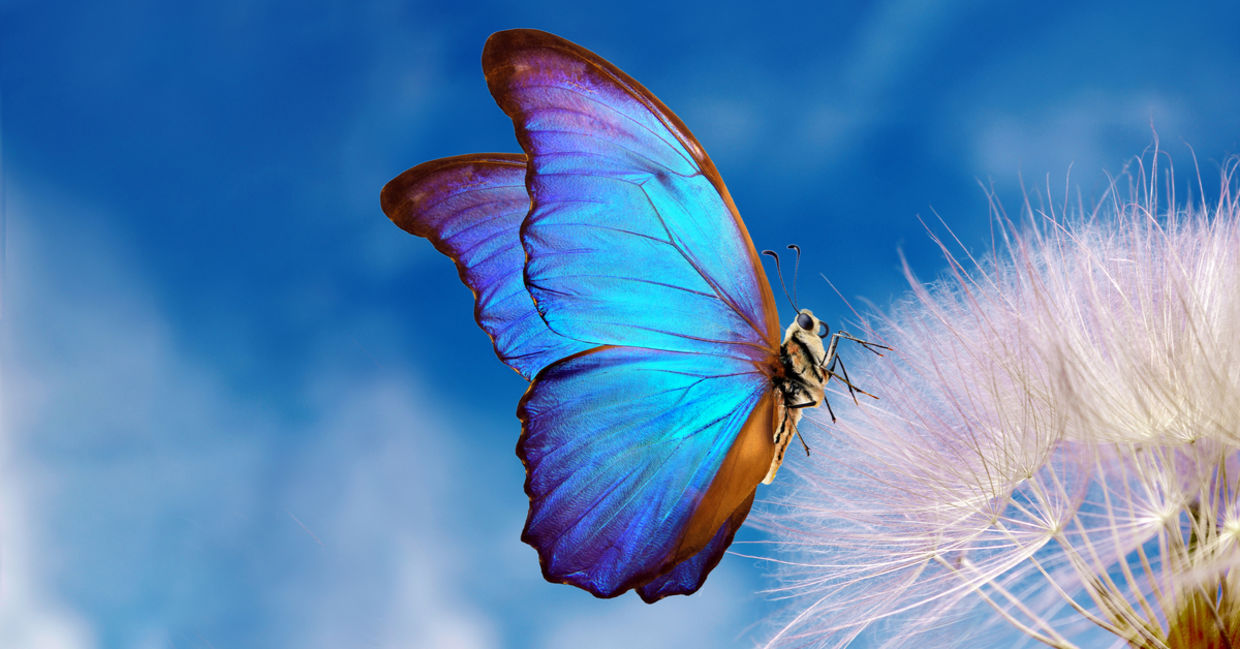
(KRIACHKO OLESKII / Shutterstock.com)
“Beautiful and graceful, varied and enchanting, small but approachable, butterflies lead you to the sunny side of life. And everyone deserves a little sunshine.” This was how Jeffrey Glassberg, biologist and butterfly enthusiast, has described these enchanting and alluring insects.
Butterflies are a favorite sign of spring. These gentle flying rainbows don’t just lift people’s spirits and lead them to the “sunny side of life.” They are also pollinators that make gardens bloom.
Want to attract these pleasant pollinators to your garden? Here is how you can grow a butterfly garden.
Choosing a spot
When it comes to real estate, the secret is “location, location, location”. HGTV explains that location is key when planting a butterfly garden as well. Butterflies like spots with lots of sunny perches. Fence posts and flat rocks are inviting spots for butterflies to sunbathe.
View this post on Instagram
But they also need shade from rain and wind, and places to hide from predators. A sunny area with a few perches, and an overhanging shrub or two, is the ideal location to start the garden. Of course you can always plant shrubs or small trees and lay out some flat rocks to mold the perfect environment.
Time to plant
More than just shady shrubs are needed to attract butterflies. Butterflies can be eye-poppingly vibrant and colorful. And it comes as no surprise that they are themselves attracted to eye-popping colors.
Delicate white yarrow, green and purple butterfly bush, black-eyed Susans, and colorful coneflowers are just some of the many flowering plants that butterflies particularly enjoy. These flowers, and others, are tubular and have “landing strips” for easy feeding, that bring the pretty pollinators in.
Milkweed is another popular option for a butterfly garden. Monarch caterpillars (and other species of caterpillar) nourish themselves on the milkweed leaves.
View this post on Instagram
For the healthiest garden, ensure that all the flowers you plant are native to your region, and that they are pesticide free. After all, the goal is to bring on the bugs, not ban them.
If pests are an issue, Masterclass recommends finding natural plants that keep pests at bay. For example, round and colorful chrysanthemums also have a compound called pyrethrum that repels spiders, Japanese beetles, ants and other pests.
A local butterfly club can advise on exactly which native plants are best for providing nectar, supporting chrysalises, feeding caterpillars, or driving away pests
Bait and water
Masterclass also recommends putting out bait and water to attract butterflies. Although these colorful insects are naturally attracted to nectar plants, a baited rock or tree stump can sweeten the deal.
View this post on Instagram
Homemade, aromatic bait can be made from rotting fruit, sugar and yeasty compounds like beer.
In addition to the bait, which draws the butterflies in, water is essential for keeping these winged visitors healthy and hydrated. If there is no natural water source in the area, a shallow dish with watery mud placed near the bait can keep butterflies comfortable and happy.
Home sweet home
Butterflies can find their own shelter under leaves and inside bushes. But, a simple butterfly box can make the garden even safer and more attractive for these insects.
A small wooden box with an opening can keep butterflies safe from predators and bad weather. Why not paint the box to match the colorful flower-filled garden?
Famed Brazilian poet, Mario Quintana, once said, “don’t waste your time chasing butterflies. Mend your garden, and the butterflies will come.”
Creating a butterfly garden is more rewarding than trying to chase these critters. And the plus is that you will have not only butterflies, but also a beautiful and wild flower garden to revel in.
YOU MIGHT ALSO LIKE:
Once Extinct, An Enigmatic Butterfly Returns to England
This City’s Wild Animals are Coming Home
5 Ways to Attract Nesting Birds







